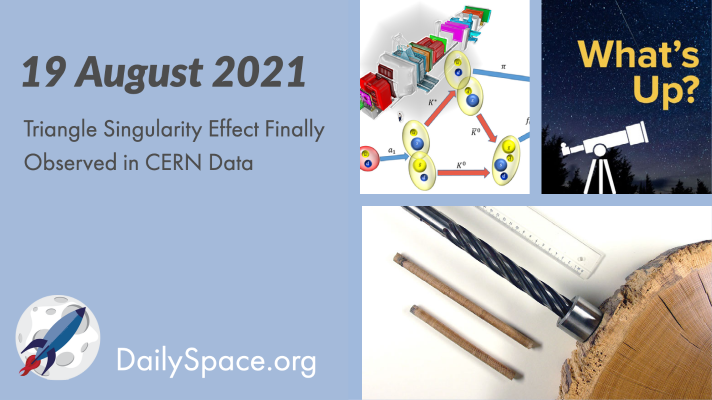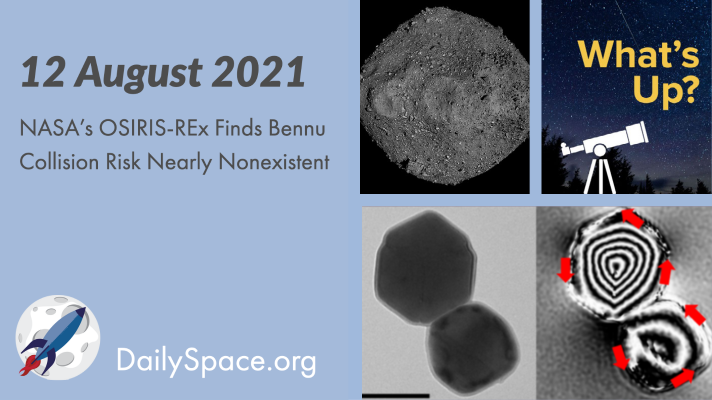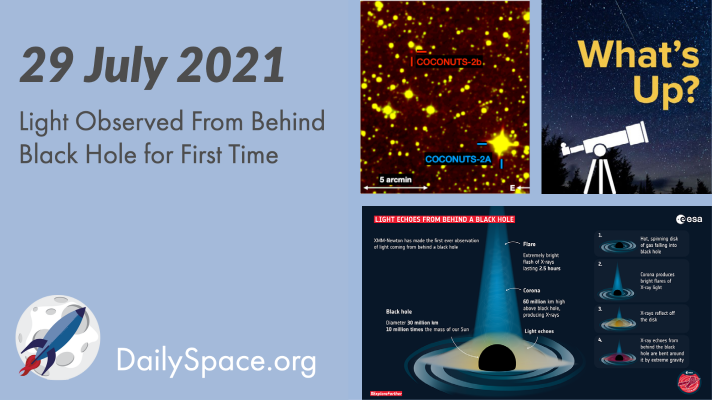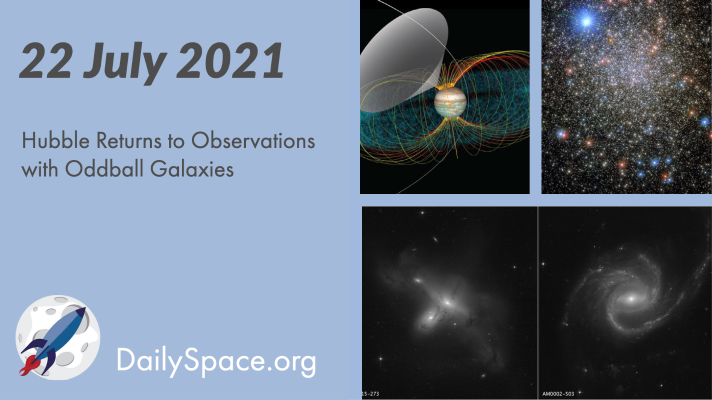
Sep 10, 2021 | Asteroids, Daily Space, Dark Matter, Galaxies, Mercury, Sky Watching, White Dwarfs
Using a simple model based on granular physics, like those used for modeling sand or sugar deposits, scientists have recreated the diamond shape of asteroids Ryugu and Bennu in computer simulations. Plus, the origins of loner dwarf galaxies and this week’s What’s Up.

Aug 20, 2021 | Climate Change, Daily Space, Earth, JAXA, Jupiter, Mars, Milky Way, Observatories, Physics, Sky Watching, The Sun
We’re talking about particle physics today! An effect called the “triangle singularity” has been observed, and it describes how particles change identities by exchanging quarks. Plus, climate change news, and in this week’s What’s Up, Jupiter is at opposition.

Aug 13, 2021 | Asteroids, Daily Space, Earth, ESA, Exoplanets, OSIRIS-REx, Our Solar System, Sky Watching, Spacecraft, Stars, Venus
After careful analysis of orbital data, gravitational forces, and several other factors, NASA’s OSIRIS-REx team calculated the risk of a collision with near-Earth asteroid Bennu to be 0.057% through 2300. Plus, magnetites in meteorites reveal solar system history, and the constellation Ophiuchus is What’s Up.

Aug 6, 2021 | Asteroids, Comets, Daily Space, Earth, Jupiter, Mercury, Moon, Sky Watching, Spacecraft, Stars, Supernovae, Venus, White Dwarfs
Two new studies have possibly identified regions on the Moon’s surface that could contain pieces of the lunar mantle, which would be possible sample targets for the Artemis mission. Plus, Venus gets a double flyby next week, and it’s all about asteroids and meteor showers in this week’s What’s Up.

Jul 30, 2021 | Daily Space, Exoplanets, Physics, Sky Watching, Supermassive Black Holes
Once again, science has proved Einstein’s theories correct. This time, observations taken with ESA’s XMM-Newton and NASA’s NuSTAR space telescopes have seen x-ray flashes bent from behind a black hole. Plus, so many exoplanet stories (Beth was left in charge) and this week’s What’s Up.

Jul 23, 2021 | Conferences, Daily Space, Exoplanets, Galaxies, Globular Cluster, Jupiter, JWST, Perseverance, Sky Watching, Spacecraft, Spitzer, Stars, White Dwarfs
After several weeks of trying different methods, the operations team successfully revived the stalwart Hubble Space Telescope, which experienced a payload computer fault back on June 13. The first images taken were of several unusual galaxies. Plus, Jupiter’s moon Io triggers radio emissions from the giant planet, and this week, What’s Up returns with a look at the Summer Triangle.








 We record most shows live, on Twitch. Follow us today to get alerts when we go live.
We record most shows live, on Twitch. Follow us today to get alerts when we go live.